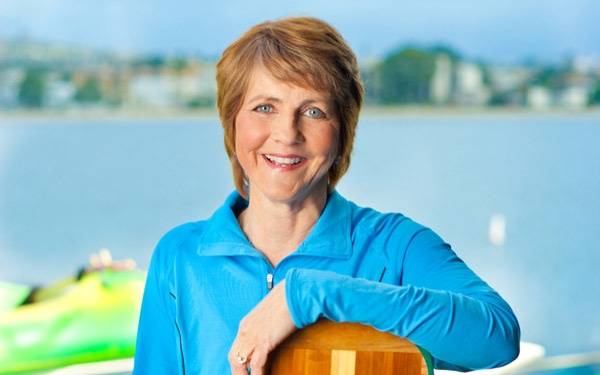Cardiac Ablation at Scripps Gives Competitive Kayaker a Chance to Paddle Again
Mary Rose received minimally invasive treatment at Scripps for a heart arrhythmia

For rowing teams, rhythm is essential. They have to work in unison, with each stroke perfectly synchronized. The same is true of the heart. Muscle cells must fire rhythmically to ensure the organ pumps efficiently.
But sometimes the heart falls out of rhythm. Abnormal heartbeats, or arrhythmias, can make the heart race or slow down for no apparent reason. Sitting on the couch can feel like a marathon. Other symptoms can include dizziness, fainting, fatigue, pain, and shortness of breath.
Diagnosis: tachycardia
Mary Rose found this out the hard way. A gifted athlete, Mary competes in outrigger canoe races and other challenging sports. But one day, while driving home from outrigger practice, her heart started palpitating. She felt like she might pass out.
“I thought maybe I had hyperventilated because of the intense training,” says Mary.
When the problem continued for nearly two hours, she contacted her Scripps physician and was soon given a treadmill test. The results were not good. Mary had ventricular tachycardia, an exceptionally rapid heartbeat that can lead to cardiac arrest.
“I was shaken up by the diagnosis,” says Mary. “I wasn’t prepared for the shock of a serious condition that might require a pacemaker and cause me to give up any strenuous activity.”
Minimally invasive treatment for tachycardia
While tachycardia is serious, it’s also quite treatable. Mary’s medical team, led by Scripps Clinic electrophysiologist Douglas Gibson, MD, suggested a cardiac ablation, during which the heart cells that generate rhythm disorders are tracked down and destroyed.
A minimally invasive procedure, cardiac ablation uses a small, flexible catheter, moved gradually through a patient’s blood vessels, to access the heart. Once there, electrophysiologists, who specialize in correcting rhythm disorders, map the heart’s electrical system to determine which cells are misfiring and ultimately eliminate them.
Mary received her ablation only two days after the initial diagnosis. Like most patients, she was up and walking the same day and was home after only one night in the hospital.
Adjusting her lifestyle
While Mary would not need a pacemaker to keep her heart rhythm stable, she still had to make a few changes. At the encouragement of Christopher Suhar, MD, a cardiologist and director of the Scripps Center for Integrative Medicine, she began taking vitamin supplements and medication to lower her cholesterol.
But she also needed to modify her workout routine. Though super fit, Rose’s regimen was inconsistent — long periods of low activity punctuated with sudden spikes of extreme exertion. She had to incorporate daily aerobic exercise to make her activity more consistent and keep her heart healthy.
Mary recovered rapidly. She was back to paddling a month after her procedure. A few months later, her team took first place in the Queen Lili’uoklani 18-mile race in Hawaii.
“I’m so grateful to my Scripps team,” says Mary. “I’m amazed that I was able to walk around only six hours after my procedure and am tickled pink that this was so easy.”